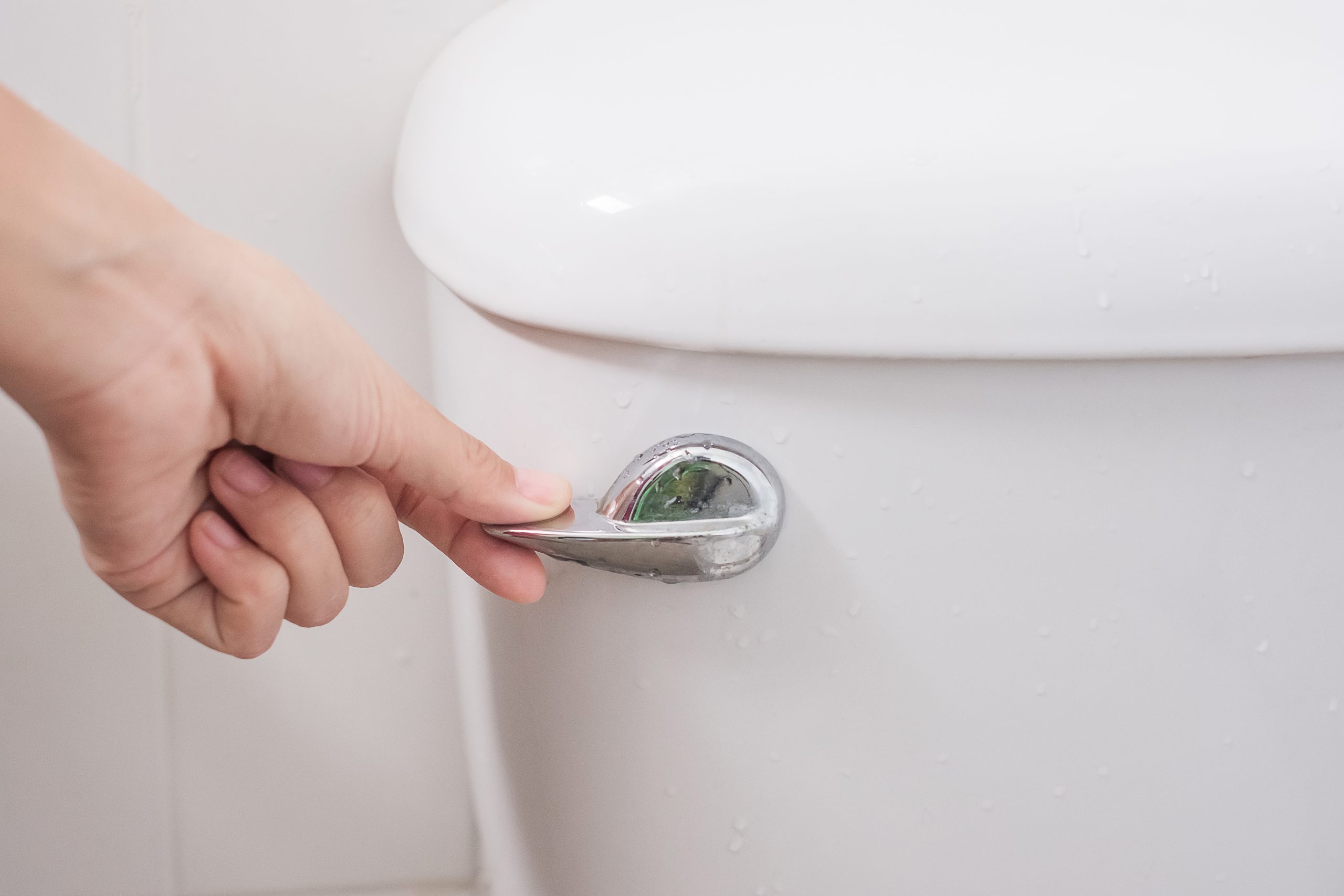 (412) 364-9114
(412) 364-9114

After 35+ years of plumbing work across Northern Pittsburgh, we’ve seen our fair share of toilet shut-off valve problems. It’s one of those small components that you don’t think about until it stops working—and then it becomes a big deal real fast.
In this blog we walk you through everything you need to know about toilet shut-off valves, from spotting problems early to tackling the replacement yourself (or knowing when to give us a call).
Think of your toilet shut-off valve as the gatekeeper for your toilet’s water supply. This small but mighty component sits on the water supply line leading to your toilet—usually poking out from the wall or floor behind the tank. Its job is simple but crucial: it lets you turn off the water flow to your toilet without shutting down water to your entire house.
When everything’s working right, you probably never give it a second thought. But when you need to make a quick repair, stop a leak, or replace a toilet component, that little valve becomes your best friend. It’s the difference between a quick fix and a flooded bathroom.
Most older homes (and trust us, we’ve worked on houses from every decade) often have shut-off valves that have seen better days. Here’s what to watch for:
Water Leaking Around the Valve: If you notice water pooling near the base of your toilet or dripping from the valve itself, don’t ignore it. Even small leaks can cause big problems over time, from water damage to increased utility bills.
The Valve Won’t Turn: After years of sitting in one position, mineral deposits from our Pittsburgh water can cause valves to seize up. If you try to turn the valve and it’s stuck tight, forcing it could cause it to break—definitely not what you want in an emergency situation.
Water Won’t Shut Off Completely: When you turn the valve all the way and water still trickles into the toilet, the internal mechanism has worn out. This means you can’t properly isolate your toilet for repairs, and you’re wasting water to boot.
Visible Rust or Corrosion: Let’s be honest—basements and crawl spaces see their share of humidity. If the valve on your Pittsburgh potty looks rusty or corroded, it’s living on borrowed time. Replace it before it fails when you need it most.
Before starting any plumbing project, always make sure you have everything on hand. Nothing’s worse than getting halfway through a job and realizing you need to make a run to the hardware store. Here’s your shopping list:
For the valve itself, you’ll typically choose between a compression valve or a push-fit valve. Compression valves are the traditional option and work with most setups, while push-fit valves are newer and easier to install but require the right pipe conditions.
Step-by-Step: Replacing Your Toilet Shut-Off Valve
After decades of doing this work, we can tell you that replacing a shut-off valve is one of those jobs that’s more about patience and preparation than special skills. Here’s how to tackle it:
First things first—turn off the water supply to your house. The main shut-off valve is typically near your water meter, often in the basement or crawl space. In older Pittsburgh homes, it might be in an unexpected spot, so locate it before you start. Turn it clockwise until it stops.
Flush your toilet to empty the tank and bowl. You’ll still have some water in the system, so keep those towels handy. Place a bucket under the shut-off valve area to catch any residual water. This step saves you from an unnecessary mess.
Using your wrench, carefully loosen the nut that connects the flexible supply line to the shut-off valve. Turn it counterclockwise. Water will likely drip out—that’s normal. Once it’s loose, unscrew it by hand and move the supply line out of your way. Be gentle; you’ll be reconnecting this later.
Now for the main event. How you remove the old valve depends on what type you have:
For Compression Valves: Use your wrench to loosen the compression nut that holds the valve to the pipe. Turn counterclockwise. Once it’s loose, slide the old valve off. You might need to wiggle it a bit if it’s been there for years.
For Push-Fit Valves: These are simpler. Push the release collar on the valve and pull it straight off the pipe. Some require a special disconnect tool, but most come off by hand.
If the pipe looks damaged or corroded where the valve connects, stop here and call a professional. Trying to attach a new valve to a compromised pipe is asking for trouble.
Clean the pipe end with a rag to remove any debris or old sealant. For compression valves, slide the compression nut and ring onto the pipe first. Then slide the new valve onto the pipe.
Apply Teflon tape to the threads in a clockwise direction (about 3-4 wraps should do it) to ensure a watertight seal. Hand-tighten the compression nut, then use your wrench to snug it up. Don’t over-tighten—you want it firm, not Superman-strong.
For push-fit valves, simply push the valve onto the pipe until you feel it lock into place. Make sure the pipe is cut cleanly and squarely for the best seal.
Attach the flexible supply line back to the new shut-off valve. Hand-tighten first, then use your wrench to give it about a quarter turn more. Again, snug is good; overtightening can strip threads or crack fittings.
Turn the main water supply back on slowly. Head back to your toilet and gradually open the new shut-off valve. Watch carefully for leaks around both connections—where the valve meets the pipe and where the supply line connects to the valve. If you see any drips, turn off the water and tighten things up a bit more. Let the tank fill, then flush the toilet a couple times. Check again for leaks. If everything’s dry, you’re golden.
While we appreciate a good DIY spirit, there are times when calling a professional plumber just makes sense:
You Can’t Shut Off the Main Water Supply: If your main shut-off valve is stuck, broken, or you simply can’t locate it, don’t risk flooding your home. We can handle this situation safely.
The Pipes Look Rough: If you see significant corrosion, rust, or damage on the pipes themselves, replacing just the valve won’t solve your problem. The whole supply line might need attention, and that’s definitely a job for experienced hands.
You’re Not Comfortable With the Process: There’s no shame in calling for backup. One small mistake can lead to water damage that costs far more than a service call.
It’s an Emergency: If your valve has failed and water is going everywhere, don’t try to be a hero. Call us immediately at (412) 364-9114.
Your Home Has Older Plumbing: Many homes in our area were built decades ago with plumbing systems that require special knowledge. If your house was built before 1980, there’s a good chance your plumbing setup has some quirks that are best handled by someone familiar with older Pittsburgh homes.
At Terry’s Plumbing, we’ve been keeping Northern Pittsburgh homes running smoothly since 1984. Whether you’re dealing with a stubborn shut-off valve, want professional installation, or just need advice on tackling the project yourself, we’re here to help. We’re a family-owned business, and we treat every home like it’s our own.
Don’t let a faulty shut-off valve turn into a major headache. Give us a call at (412) 364-9114, and let’s get your plumbing back in working order. After all, when you call Terry’s, you “Don’t Go to Bed With That Drip Tonight.”
We’re local, we’re experienced, and we’re always just a phone call away. That’s the Terry’s Plumbing difference.